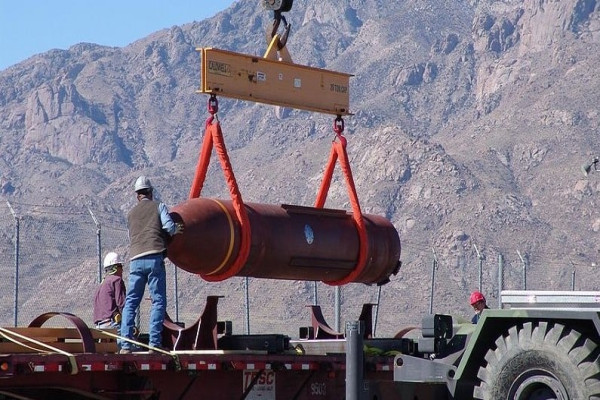
Taking the cue from his president, US Defense Secretary Pete Hegseth claimed that air strikes by B2 bombers had “devastated the Iranian nuclear programme.”
More details were forthcoming from Air Force General Dan Caine that 75 precision guidance weapons were used including 14 Massive Ordnance Penetrators, also known as bunker busters, that can burrow 200 feet deep into the ground before exploding.
Assuming Iran’s nuclear facilities in Fodrow were at the same or similar depth, the bunker busters could have caused considerable damage.
But it’s important to note that each bomb weighs 30,000 pounds or 13,607 kg of which the explosive component is 5,000 pounds or 2,267 kg. That probably explains why the US used 14 bunker busters on Fodrow and photos showed six fresh craters.
Now here comes the tricky part, if the nuclear facility was at a greater depth, then it remains to be seen whether Hegseth’s claim holds up.
Iran has said it had shifted out the enriched uranium to another location. Centrifuges cannot be moved but as these are basically tubes setting up at a new location is no big deal. So until otherwise proved, Hegseth’s claim is just that, a claim.
What do we know about the Iranian nuclear programme? Like the Israeli nuclear programme, frankly very little unless one goes entirely by the doomsday scenarios sketched by the Israelis and their Western backers.
Brig Arun Sahgal, Director of the Forum for Strategic Initiatives, a Delhi-based think tank, says the assessment of nuclear experts whom he deals with, is that Iran has fissile material of 80 percent enrichment.
“Iranian nuclear scientists have also developed the casing to pack the fissile material and all that maybe needed is insertion of the explosive to create desired over pressure,” he told StratNewsGlobal.
“They also believe some sort of cold testing has been done with the help of North Korea, possibly facilitated by China and if push comes to shove, they could create nuclear weapons of 5 to 20 kilotons. In short Iran has the capacity to strike back.”
Sahgal points to a Russian assessment, which is that Iran’s nuclear infrastructure appears not to have been damaged or only “slightly affected”, and that nuclear enrichment “for the future production of nuclear weapons, will continue.”
The Russians also say that “a number of countries are ready to directly supply Iran with nuclear ammunition”, if required. No country was specified but is Russia hinting that it could do so?
In the Russia view, the clerical regime in Tehran will emerge stronger from this attack and the US could end up being drawn into a ground operation with uncertain results.
Thirty eight years in journalism, widely travelled, history buff with a preference for Old Monk Rum. Current interest/focus spans China, Technology and Trade. Recent reads: Steven Colls Directorate S and Alexander Frater's Chasing the Monsoon. Netflix/Prime video junkie. Loves animal videos on Facebook. Reluctant tweeter.






